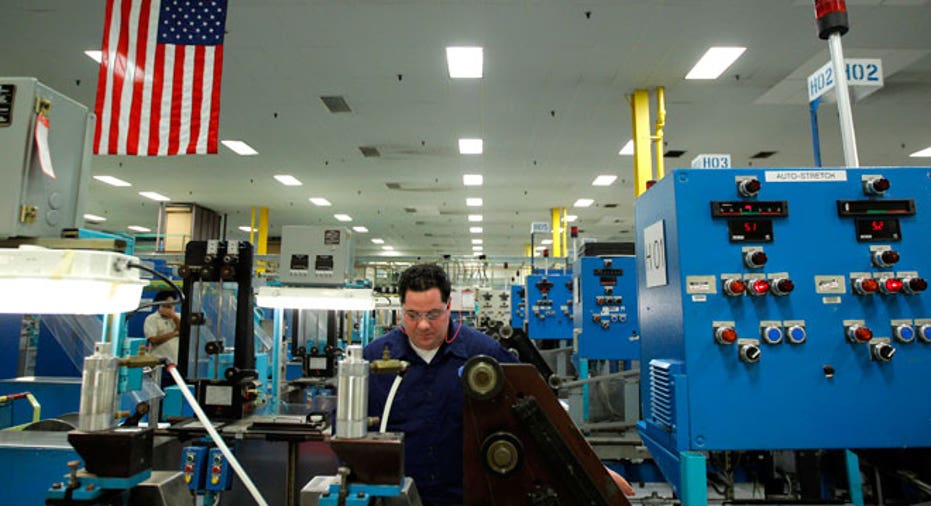Wages A 'Hot Button' Issue for Foreseeable Future

Weak wage growth has emerged as one of the more confounding issues confronting workers, economists and policy makers as the U.S. slowly recovers from the 2008 financial crisis and the deep recession that followed.
“The wage issue is going to be with us a long time because we’re fighting a really difficult battle in our economy to get the wage growth we need across the board,” Cliff Waldman, senior economist for the Manufacturers Alliance for Productivity and Innovation (MAPI), a public policy and economics research organization in Arlington, Va, said.
At a glance, it has appeared for months as if the U.S. labor market is healing nicely from its recent low point in late 2009, when unemployment touched 10% and an estimated 8.8 million Americans either had or were about to lose their jobs. But digging deeper into the numbers tells another story.
The unemployment rate has fell to 5.5% in February, a six-year low, and monthly job creation has been going gangbusters for well over a year. But most Americans aren’t seeing that tighter jobs market translate into higher paychecks.
The disparity is expected to be on display again on Friday when the March jobs report is released by the U.S. Labor Department. Economists expect another month of well north of 200,000 new jobs and the unemployment rate to tick lower to 5.4%. But once again, wages aren’t expected to rise accordingly.
Consequently, wages will be a central focus of the report as analysts attempt to decipher why an ostensibly healthier jobs market hasn’t pushed average hourly earnings higher.
Wages a ‘Hot Button’ Issue
“Wages are such a hot button issue right now because the subject touches on so many controversial issues,” Waldman said.
Wage growth – or lack thereof – is directly impacted by productivity, globalization, major shifts in demographics, the decline of unions, deficiencies in the U.S. education system and technology, according to Waldman.
“It links up in particular with the issue of productivity,” he said. “In an efficient, well-functioning economy, the real wages should be keeping pace with productivity. If the work force of an economy is more productive, in theory, workers should be earning more. But that hasn’t been the case. It has not really kept up.”
Many of the problems are well chronicled: From companies moving good-paying jobs overseas to take advantage of cheaper labor forces in developing countries, to the problems U.S. educators have had in attracting students to so-called STEM (science, technology, engineering and mathematics) subjects that eventually lead to higher paying jobs.
These problems are known as structural because they aren’t going away any time soon.
Other significant issues currently impacting wages are seen as cyclical, or likely to work themselves out fairly soon. In particular, the ‘slack’ in the labor market thanks to the many Americans who have returned to the workforce either in temporary or part-time jobs, some in positions well below their qualifications, after being laid off during the recent recession.
The slack keeps wages low because it creates a huge supply of workers who would gladly leave their low-wage, part-time or temporary jobs for a high paying full-time position with benefits. The latter are the types of jobs that move wages higher.
If employers know they can always dip into that large pool of part-time and temporary workers to fill their openings, they have no incentive to raise wages in order to attract qualified employees.
Federal Reserve Chair Janet Yellen has repeatedly pointed to this slack as a reason why the U.S. central banks is taking a cautious approach toward returning U.S. monetary policy to normal by raising interest rates.
Yellen and her like-minded (read: Dovish) Fed colleagues have recently softened from their long-held position that they won’t raise interest rates until the Fed reaches its dual mandate of full employment and price stability. They are approaching the former, but the latter, as measured by inflation, has been more problematic with inflation hovering well below the Fed’s 2% target rate.
Supply and Demand
David Kelly, chief global strategist at J.P. Morgan Funds, said the wage component of Friday’s report will be watched “very closely as wages have yet to respond to a tightening labor market.”
Nevertheless, Fed policy makers have recently suggested they are open to raising rates sooner rather than later because they are confident that wages -- and consequently inflation -- will move higher if labor markets continue to tighten.
Kelly noted as much, citing a speech last week by Yellen.
“The Fed is willing to begin to raise rates before actually seeing a pickup in wage or price inflation so long as it sees a continued increase in resource utilization rates and is confident that inflation will return to a rate of 2% or more over time,” he explained.
“A chronic demographic problem limiting labor supply growth and the likelihood that oil prices will drift up over the next two years, suggest that both of these preconditions will be met and markets will have to adjust to a tightening Fed,” Kelly added
Meanwhile, Waldman said he expects wages to start moving higher in another year or so if job creation maintains its current momentum.
“Another year of this and we’ll start to see wage growth show up in the data,” he said. “Supply and demand is still supply and demand.”



















